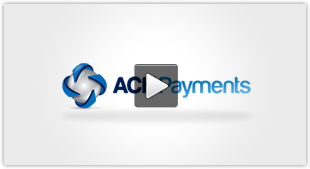If your website is slow, it’s probably costing you so much sales that even the best payment processor or the best marketing won’t help.
Just so you know how toxic slow websites can be for your business, recent data from the Speed Awareness Month website has revealed that slow websites cost the U.S. economy over $500 billion every year.
Here are some interesting stats to show you how dangerous it can be to have a slow website:
- 47% of online shoppers expect a website to load in under 2 seconds and 40% of people will abandon a website if it takes more than 3 seconds to load
- At peak traffic times, over 70% of people will leave a slow website for a competitor’s instead of being delayed and 80% of people would probably never return due to a bad experience
- A one second delay can cost your website 7% in conversions; the loss in conversions keeps increasing with each additional second it takes for your site to load
With the above stats, it’s safe to say that having a slow website is probably preventing people from even reading your copy let alone clicking your payment button and entering their details to buy from you.
Here are a few tips for increasing your website speed and making more sales:
1. Reduce the Use of Images on Your Site
While studies have shown that using larger images on your site will draw more people into your content, it’s important to also realize that images are one of the main reasons why most sites are slow.
If you use the occasional single image in your content, it probably won’t have that much of an impact on your site speed but when you have a page with several images, usually the homepage, then the impact on your site speed, traffic and sales could be very significant.
There are two main ways to ensure your site speed isn’t significantly affected because of the images you use:
- Reduce the number of images that you use on your site as well as the number of images that appear on any single page at a given time
- Compress and optimize every single image you use so that their size is reduced while conversion is intact
For most people, the second option is usually the best. You can ensure that your website speed is not really influenced by the images you use by using image compression tools like Yahoo! Smush.it or Image Optimizer to compress your images before you add them to your articles; these image compression tools will often remove unnecessary bytes and data from your images and, in some cases, will reduce the size of your images by half or more without impacting the quality of your images.
2. Use a Content Delivery Network
A content delivery network or CDN is a collection of multiple servers hosted in different geographical locations all over the world; a typical CDN network could have servers in 10 different countries or more.
One of the factors that influence how quickly a user is able to access your website is how far away your website is from their location; a website in the US will load faster for someone in the US than for someone in India. A CDN network makes this problem go away since your website will be hosted on various networks all over the world and people visiting from all over the world will be served content from the server nearest to them; with a CDN, a person from India accessing your website hosted on a US server will now most likely be served a version from India. It’s like your website hosted on dozens of servers in different locations all over the world.
Amazon CloudFront and MaxCDN are some reliable examples of CDN networks you might want to start with.
3. Reduce the Number of Plugins and Tracking Codes You Use on Your Website
This is especially important if you use a CMS like WordPress or if your website relies a lot on plugins to work effectively.
Having too many plugins power your website, while apparently giving you more options and flexibility, will only keep cluttering your server; each plugin you use will increase requests made on your server and this will eventually make your website slower. By using minimal plugins on your website and coding important features into your website template, you’ll be able to improve your website speed significantly.
Another step you can take to make your website faster is to reduce the number of tracking codes you use on your website; while it’s easier to install tracking codes for 6 different analytics service, it’s important to realize that each tracking code has to connect to a different server which in turn impacts your site speed whenever someone tries to access it.
4. Don’t Host Your Images on Another Server
This particular point is especially important; when you host your images on another server, whenever a visitor tries to access your website, the visitor’s browser will also connect to the browser your images are hosted on before fully displaying your website.
The additional request to that server automatically makes your website flow; to further complicate things, your website will become slower if that server is experiencing peak traffic and your website could become irritatingly slower or even go down should that server go done.
While it will often seem like you’re saving money by hosting your images on free image sharing sites, it’s probably costing you a lot more than you can imagine.
What other mistakes could be making your site slow?
Having the right payment processor is not all there is to running a perfect online business; sometimes, you have to look into issues like site speed to ensure visitors to your site have a pleasant experience. This, in turn, eventually gets more people to pay for and use your products and services.








